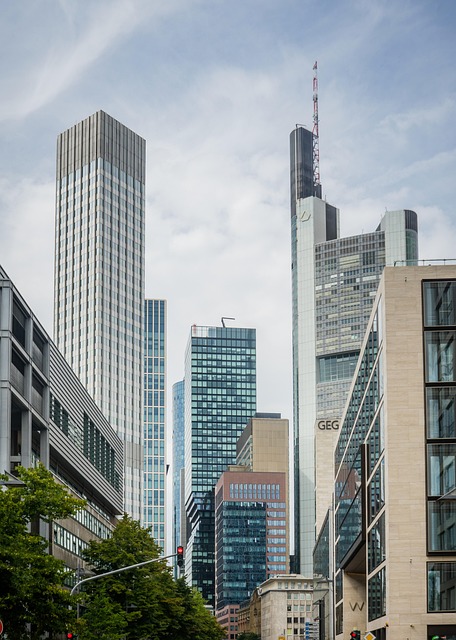Karachi's Federal B Area faces air quality challenges due to industrial activities, traffic, and geographical factors, as indicated by high Air Quality Index (AQI) levels. Residents and authorities are addressing this through regular AQI monitoring, green initiatives, public education, and collaborative efforts to enhance environmental standards, aiming for a healthier future for the region.
Karachi, Pakistan’s bustling metropolis, faces a silent enemy—air pollution. This article explores the intricate relationship between the city’s air quality and its residents’ health. We delve into the Air Quality Index (AQI) as a critical tool for understanding Karachi’s air pollution levels, particularly in Federal B Area. By examining recent data, we uncover the extent of the challenge and highlight strategies aimed at improving air quality in this vibrant yet impacted sector of the city.
- Understanding the Air Quality Index (AQI) in Karachi
- Federal B Area: A Comprehensive Overview of Air Pollution Levels
- Strategies and Initiatives for Improving Air Quality in Karachi's Federal B Area
Understanding the Air Quality Index (AQI) in Karachi

The Air Quality Index (AQI) is a vital tool for understanding and communicating air quality, particularly in densely populated cities like Karachi. It provides a standardized measure of air pollution levels, making it easier for residents to assess their daily air quality and take necessary precautions. The AQI scale ranges from 0 to 500, with lower values indicating better air quality. In Karachi, the Federal B Area often experiences varying degrees of air pollution, influenced by factors like vehicle emissions, industrial activities, and weather conditions.
When interpreting the AQI in Karachi, it’s crucial to stay informed about the local environmental conditions. The federal government and various environmental agencies regularly monitor and publish air quality data for different areas, including Federal B. This information empowers residents to take proactive measures, such as wearing masks when the AQI is high or adjusting outdoor activities accordingly. By staying aware of the AQI, folks in Karachi can contribute to collective efforts to enhance air quality and ensure a healthier environment.
Federal B Area: A Comprehensive Overview of Air Pollution Levels

Federal B Area, a vibrant and densely populated region in Karachi, Pakistan, presents unique challenges when it comes to air quality. This area is characterized by high human activity, industrial operations, and traffic congestion, all of which contribute to elevated levels of air pollution. A detailed analysis of the Air Quality Index (AQI) for Federal B reveals varying degrees of pollution throughout the year, with particulate matter (PM2.5 and PM10) being the primary concern.
The AQI data highlights critical periods, especially during the winter months when coal-based heating systems intensify air pollutants. This urban center’s geographical location and topographical features also play a role in trapping emissions, leading to reduced airflow. However, there is growing awareness among residents and local authorities regarding these issues, prompting initiatives to enhance environmental standards. Regular monitoring, implementation of green policies, and public education are key steps towards improving the air quality in Federal B Area and ensuring a healthier future for Karachi’s inhabitants.
Strategies and Initiatives for Improving Air Quality in Karachi's Federal B Area

Karachi’s Federal B Area faces significant challenges in maintaining optimal air quality due to various factors, including industrial activities, traffic congestion, and lack of green spaces. To combat this, several strategies and initiatives have been undertaken to improve the region’s air quality. One key approach is implementing stricter emission norms for industries, encouraging the adoption of cleaner technologies, and promoting regular maintenance of vehicles. The local government has also initiated projects to enhance greenery by planting more trees and creating urban parks, which not only beautifies the area but also acts as natural air filters.
Additionally, raising public awareness about the importance of clean air and energy-efficient practices is crucial. Educational campaigns and community engagement programs aim to encourage residents to adopt sustainable habits, such as using public transport or electric vehicles, reducing waste, and minimizing outdoor burning activities. Collaborations between government bodies, environmental organizations, and local communities are essential in implementing these initiatives effectively, ensuring a healthier and more livable environment for the folks of Karachi’s Federal B Area.
The air quality index (AQI) in Karachi, particularly Federal B Area, reflects a pressing need for action. By understanding the comprehensive overview of air pollution levels and implementing effective strategies, Karachi can strive for better air quality. Initiatives aimed at reducing emissions, promoting sustainable practices, and fostering public awareness are crucial steps towards improving the environment for residents. In light of these discussions, it’s evident that collective efforts are required to ensure a healthier and more vibrant future for the bustling metropolis of Karachi.



